Search Results
Fine Jewelry University Articles matching: “Loose aquamarine gemstones”
Showing only FJU Article results. Click here to show all results.
Fine Jewelry University (Show All FJU Articles)
-
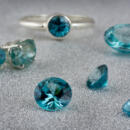
Gem in the Spotlight: Blue Zircon
Zircon may be last in the alphabet of gemstones, but it is first in sparkle. The crystal structure of zircon creates one of the liveliest displays found in any colored gem. In fact, before any of the manmade diamond simulates were made, the colorless version of zircon was used in …
-
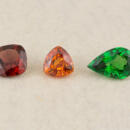
Gem in the Spotlight: Garnet
… midst of cold, white (valley fog) and at times stark surroundings are rewarded with one of the most varying birth gemstones…Garnet. Garnet’s pizzazz energizes the gloomiest day. Garnet varieties brighten the world in colors of yellow to … garnet crystals in rock reminded them of the shape and color of pomegranate seeds. Garnet is really a group of gemstones. The pyrope, almandine and spessartite are the red – brown to orange sometimes with a tint of violet varieties. The …
-
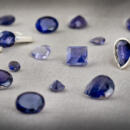
Gem in the Spotlight: Iolite
… that makes you a modern day Viking. The Gemology of Iolite Iolite is the gem variety of the mineral Cordierite. Iolite was once known as a “water sapphire”. Dichroite is another synonym for iolite. Dichroite is a Greek word which loosely translates as two-colored rock. This refers to iolite’s pleochroic nature. iolite cannot be heat treated to enhance its color. The color you see is the natural color of the stone when it was first discovered. Coming in at 7 to 7.5 on …
-
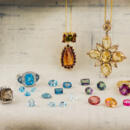
Gem in the Spotlight: Topaz
Topaz is a gemstone with amazing variety. Topaz is naturally colorless and clear like a diamond, but it can also take on an entire range of colors. Yellow to reddish-orange is known as Precious Topaz or Imperial Topaz. Imperial Topaz is one of the expensive varieties of Topaz. Gem suppliers can even bombard Topaz in a nuclear reactor to produce various shades of Blue Topaz. Topaz is the birthstone for November, and they make great gifts for anyone born in November, or for anyone that just likes beautiful jewelry.
-
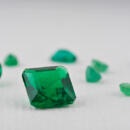
Gem in the Spotlight: Emerald
…, and rebirth. Gemology of Emerald Emeralds are a member of the beryl mineral family (along with morganite and aquamarine) and are valued for their rich green color. The intensity of an emerald’s hue depends on the presence of chromium and … to green than to any other color thereby making it easier on the eyes. Pliny said that emeralds were the only gemstones that delighted the eye without fatiguing it. In fact, Emperor Nero was said to wear a kind of emerald glasses to watch the…
-
Synthetic Gems: The Whole Story
Synthetic rubies, emeralds, sapphires, diamonds and more are everywhere. Man made gems come in many forms: every thing from simple glass to high tech chemical tongue twister like gadolinium gallium garnet (also called GGG) and the modern diamond simulant moissanite. Synthetic gems are not bad, fakes, or the curse of a modern society. The more you know about them, the better you can understand their place in our society and in the jewelry world.
-
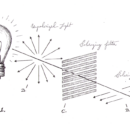
The Magic of Polarized Light
… Polarizing filters are critical to many fields of study. Without them, we wouldn’t be able to easily identify gemstones, TVs and monitors wouldn’t work in the same way, and the latest blockbuster movie wouldn’t pop off the screen the way it … allow them to function efficiently as they do without negative side effects. Using Polarized Light in Gemology Some gemstones, due to their unique chemical structure, actually polarize light themselves. These gems are doubly refractive (DR) …
-
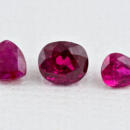
Gem in the Spotlight: Ruby
… deeper? Whatever it is, ruby’s impact on humanity is broad and deep, with arguably the richest history of all gemstones. Gemology of Ruby Rubies are in the corundum gem family along with sapphires. Corundum is an extremely durable form of … the process. You can use an ultrasonic cleaning machine with rubies, but use caution as these machines can cause loose gems to come out of their settings. Remember to dry your ruby jewelry thoroughly before wearing or storing. Why Ruby? …
-

How to Tell If a Diamond Is Natural or Lab Grown
… IIa test is only an indicator for the gemologist to use. There are lab grown diamonds that are not Type IIa, and there are natural diamonds that are Type IIa, so it’s not a 100% conclusive test. Also, a diamond has to be completely loose (unmounted) to perform the test. Photoluminescence Spectroscopy and UV Radiation Going beyond the Type IIa test, more advanced equipment exists that uses spectroscopic techniques to analyze gems. One such machine is the DiaTrue …